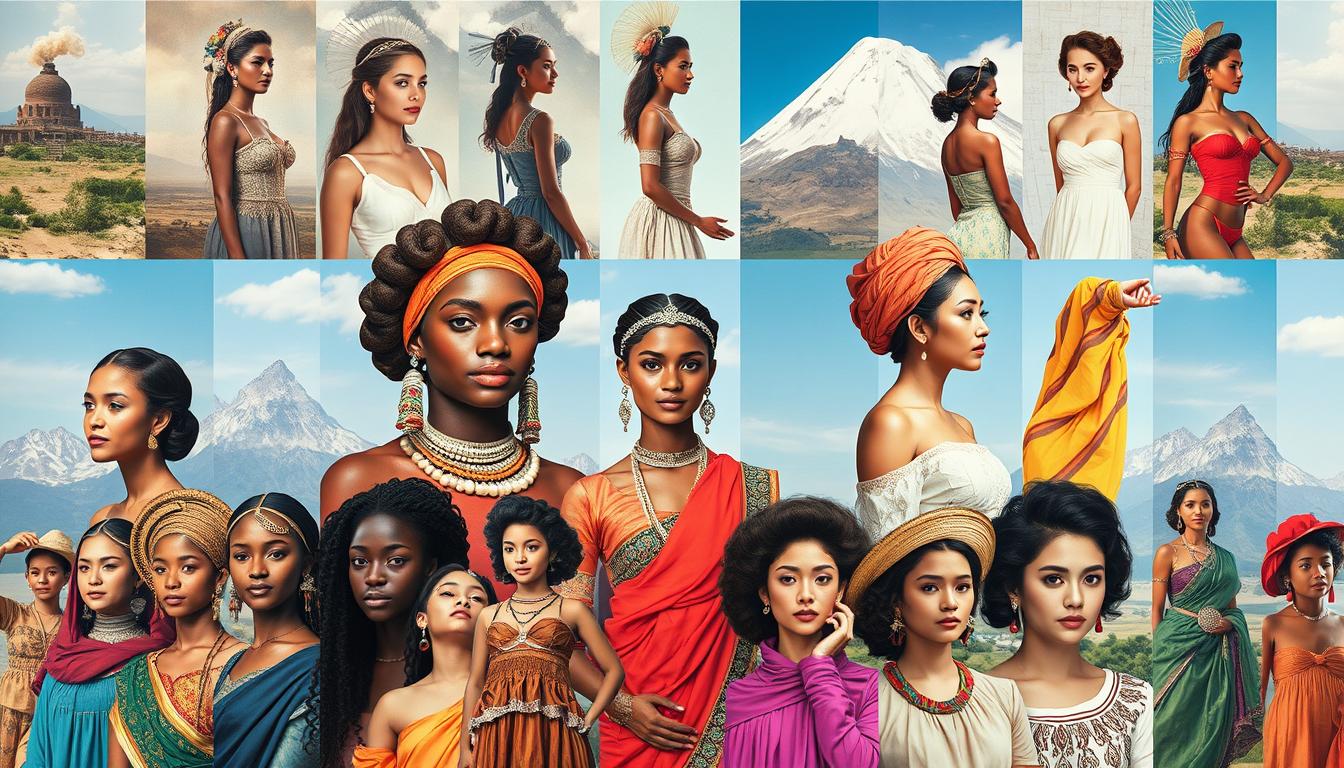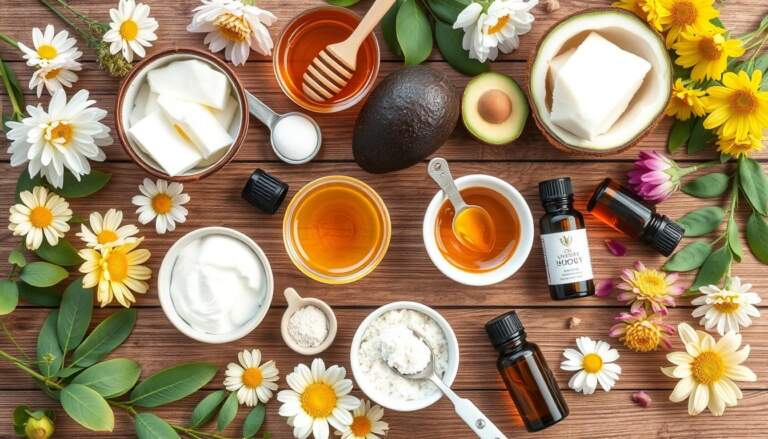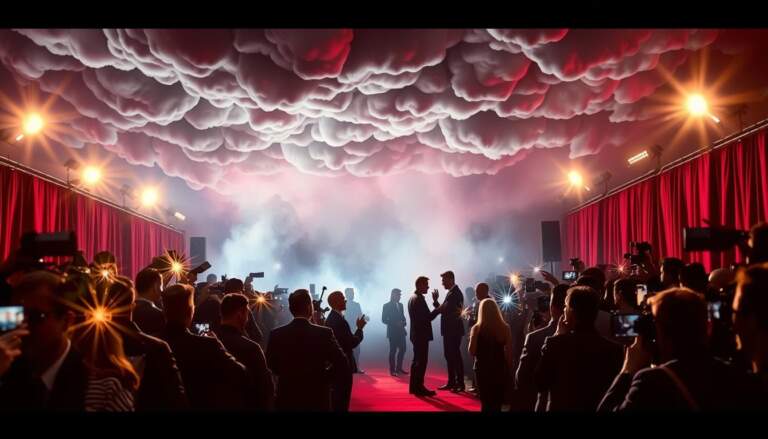Throughout history, the definition of allure has been as diverse as the cultures that interpret it. From the notable Venus of Willendorf to today’s inclusive vision of loveliness, our quest to understand beauty ideals has taken us across a spectrum of forms, symbols, and eras. Ancient civilizations narrated their beauty narratives through statues and artifacts, revealing a collective fascination with body types and features—whether the curvaceous appeal during the Ancient Greek era1 or the noble elegance desired during the Victorian times2. Echoes of these aesthetic standards are still recognized today, shaped by historical figures and punctuated by the relevant media of each period.
The global beauty evolution is a testament to society’s perpetual reimagining of attraction and elegance. As we traverse from the robust figures of fertility symbols1 to the regal and proportionate allure of Queen Louise of Prussia1, it’s clear that changing beauty norms are deeply embedded in our heritage and collective psyche. Each epoch infuses its distinct flavor on what is considered the pinnacle of physical appearance—be it the 1920s celebrating emancipated fashion2 or the 1950s glorifying the hourglass figure1.
As we witness the present-day social media platforms propelling an era of democratized beauty ideals transformation2, it seems we have entered a vibrant mosaic where everyone has a voice in defining beauty. This inclusive conversation heralds a new chapter in the comprehensive tome of visual admiration, one in which every individual has the potential to represent the new paradigm of loveliness.
Key Takeaways
- The concept of beauty is ever-evolving, shaped by varying cultural and societal norms.
- Fertility-based beauty standards dating back to 25,000 BCE influence our understanding of ancient ideals.
- Distinct historical epochs, like the Renaissance and the Victorian Era, have left indelible marks on modern beauty expectations.
- Media and prominent public figures have historically shaped and shifted public perception of beauty standards.
- The modern world is witnessing a significant transformation toward inclusive and diverse beauty norms.
- Technological advancements such as social media play a crucial role in redefining what beauty means today.
Unpacking Historical Perspectives on Beauty
Delving into the vast tapestry of historical beauty standards reveals a rich narrative of societal values and cultural norms that have shaped perceptions of aesthetics through the ages. Each epoch, from ancient civilizations to Victorian society, has preserved unique beauty ideals, leaving a legacy that echoes in today’s diverse beauty landscape.
Ancient Beauty Ideals: Venus Figurines and Fertility Symbols
The allure of ancient beauty rituals is encapsulated in the enigmatic Venus figurines, symbolizing fertility and femininity. These artifacts, such as the renowned Venus of Willendorf, emphasize rounded forms, suggesting that curvaceous bodies were celebrated as embodiments of health and fertility. This reverence for robust forms marked a pivotal era in which historical beauty symbols were profoundly intertwined with human survival and prosperity.
Renaissance and the Emphasis on Youth and Proportion
The Renaissance marked a seismic shift in artistic expression and beauty ideals. Renaissance aesthetics revered proportion, balance, and symmetry, aligning physical beauty with classical art and philosophy. This period illustrated a harmonious blend between human intellect and physical allure, portraying youth and balanced proportions as the pinnacle of human aesthetics. Such ideals were vividly captured in portraits of nobility, whose refined features defined a new era of beauty.
Victorian Corsets and the Pinched Waist Phenomenon
In contrast to the broad strokes of Renaissance art and philosophy, Victorian fashion introduced the strict discipline of the corset, redefining the female silhouette into the hourglass figure, a clear historical beauty symbol of the era. The tightly laced corset not only sculpted the body to fit the contemporary beauty standards but also served as a symbol of both social status and restrained femininity. Such fashion pieces were a testament to the era’s complex relationship with body image, illustrating the lengths to which society dictated the terms of beauty.
Exploring these diverse historical contexts unravels the evolution of what communities have identified as beautiful. From the fertility-celebrating sculptures of ancient times to the proportional aesthetics of the Renaissance and the structured elegance of Victorian fashion, the journey through historical beauty ideals not only reflects changing societal norms but also underscores the inherent desire to meet possibly unattainable standards.
The Influence of Art and Media on Beauty Perceptions
The intertwining trajectories of art’s impact on beauty and the evolution of beauty in art have profoundly shaped societal norms and individual self-perception. From the robust oil paintings of the Renaissance to contemporary digital media, each era leverages distinct artistic mediums to reflect and establish beauty standards. The cyclical nature of these standards, often governed by societal elites, re-emerges in new forms, subtly modified to fit the modern context3.
In the bustling 1980s and 90s, a surge in consumer enthusiasm towards aesthetic enhancements marked a significant trend. Influenced by media portrayal, women opted for both surgical and non-surgical means to align with beauty ideals that were often broadcasted across burgeoning television networks3. Similarly, the fashion iconography of the “Gibson Girls” in the 1890s illustrated an ideal combining both traditional feminine grace with spirited independence, setting a benchmark for beauty that was simultaneously attainable and aspirational.
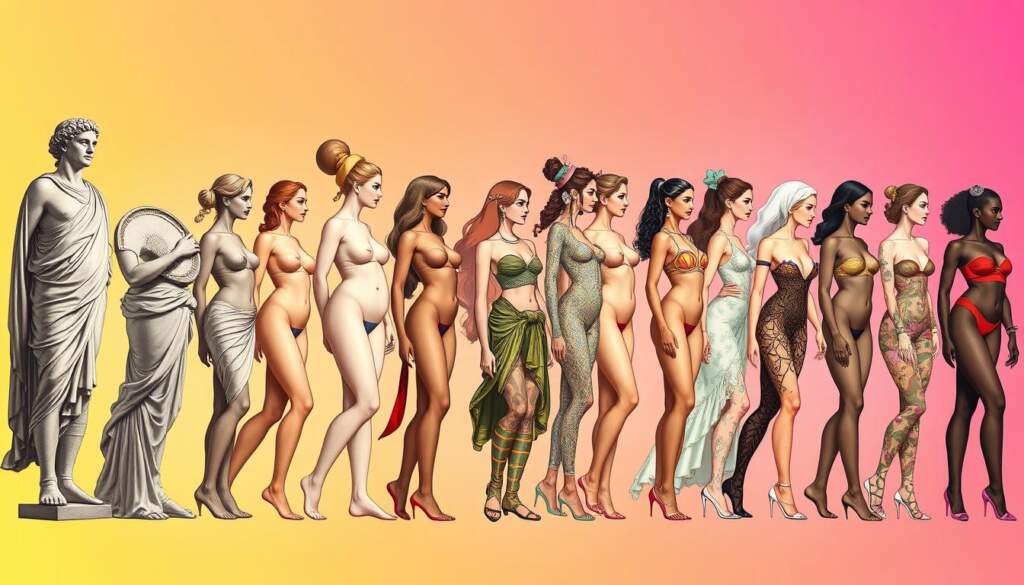

Today, the media shaping beauty standards extends beyond canvases and sculptures into the digital realm, where social media platforms are instrumental in disseminating diverse beauty ideals. The representation varies from the athletic builds celebrated in Western media to the slender figures idolized in East Asian pop culture. In Korea, perceptions of beauty are historically tied to social status, evident in practices like double eyelid surgery, which dates back to the nineteenth century4.
Furthermore, body markings in African tribes such as the Surma and Mursi have long been a cultural articulation of beauty, symbolizing readiness for marriage and reflecting significant life stages4. These indigenous practices highlight the distinct ways communities around the world use art forms to define and celebrate beauty.
The universal quest for beauty, influenced by an array of cultural practices and media portrayal, ensures a vivid tableau of humanity’s aesthetic predilections. The shift towards inclusivity and self-acceptance marks a new era in beauty standards, promoting a broader spectrum that includes various body shapes and unconventional attributes as epitomes of beauty4.
Defining Moments: Shifts in the 20th Century Beauty Standards
The 20th century was marked by pronounced 20th-century beauty shifts that redefined female aesthetics and societal views on attractiveness. This era witnessed various phases, each characterized by distinct beauty standards shaped significantly by media and iconic personalities.
In the early 1900s, the transition from traditional corsets to S-bend corsets emphasized an s-shaped silhouette, with celebrities like Camille Clifford steering this trend5. By the 1920s, the rise of flapper aesthetics marked a significant movement toward androgynous fashions, focusing on a straight and slim figure which was a stark departure from previous beauty ideals5.
The economic strains of the Great Depression in the 1930s urged a slightly more conservative approach in fashion, with a preference emerging for broader shoulders and narrower hips, reflecting the prevailing societal norms of that difficult time5. However, a dramatic shift occurred once again during the 1940s with the flourishing of the pin-up models aesthetic. This period underscored a blend of practicality and allure, advocating for a toned and muscular physique amidst the backdrop of wartime utilitarianism5.
As the 1950s rolled in, a renewed emphasis on curvaceous, feminine figures solidified, partly propelled by the influence of celebrities like Elizabeth Taylor. This era celebrated the glamorous, idealized vision of a stay-at-home mom, with defined waistlines becoming a hallmark of beauty5. Contrastingly, the 1960s heralded the rise of a less voluptuous, more childlike body type, leaning toward waifish figures—a trend significantly influenced by the burgeoning feminist movement5. Despite this skinny ideal, it is notable that the average body mass index (BMI) of American women increased during this decade5.
The 1970s maintained this trajectory, amplifying the celebrity beauty impact and entrenching independence and empowerment as attractive traits through the girl power movement. This shift not only reflected an evolution in beauty standards but also underscored a broader societal acceptance of diverse body types and identities, influenced by a wave of social and cultural transformations5.
Indeed, each decade of the 20th century brought with it new definitions and expectations of beauty, each linked intimately to the larger social, economic, and political currents of the time. From the voluptuous pin-up models to the slender flapper aesthetics, the impact of celebrity figures and cultural trends in shaping beauty standards is undeniable. These historical shifts provide a fascinating mirror reflecting broader changes in society, suggesting that beauty standards are far from static but are instead fluid reflections of the prevailing cultural climate.
Social Movements and Their Impact on Beauty Norms
The transformative power of social movements, notably the feminism and body image initiatives, has profoundly influenced contemporary ideals surrounding beauty. By challenging long-standing societal norms and advocating for acceptance of all body types, these movements have paved the way for more inclusive beauty standards that emphasize diversity in beauty.
The Role of Feminism in Reshaping Body Image Expectations
Feminism has played a critical role in the body positivity movement, contesting the restrictive stereotypes that have historically governed how women’s bodies are perceived and represented. Studies reveal that shifts in media representation can positively affect public perception, with the ratio between the bust and waist measurements of women increasing by about one-third from earlier, more constricted portrayals6.
Media and the Modern Battleground of Body Positivity
As an instrumental medium, media has undergone significant transformation to support the body positivity movement. Psychological impacts of body image have been well-documented, showing a crucial correlation between media portrayals and self-perception. Alarming statistics show nearly a third of children in the US believe they need to be thinner than their current size, which precipitates dieting behaviors from as young as seven years old6. This underscores the crucial role media plays in either perpetuating harmful beauty standards or dismantling them to promote health and self-acceptance.
Celebrating Diversity: Inclusion in Contemporary Beauty Standards
The push for inclusive beauty standards is a celebration of diversity in beauty, challenging the uniformity once prevalent in fashion and media. By embracing varied representations, the movement not only includes different body types but also global beauty standards that have been influenced by Western ideals. Anthropological studies have disputed the theory that beauty standards are solely based on evolutionary factors, pointing instead to a complex web of social, cultural, and historical influences7.
Amid these evolving beauty narratives, it remains crucial to continue fostering environments where all individuals can feel valued and recognized for their unique beauty, without conformity pressured by outdated standards.
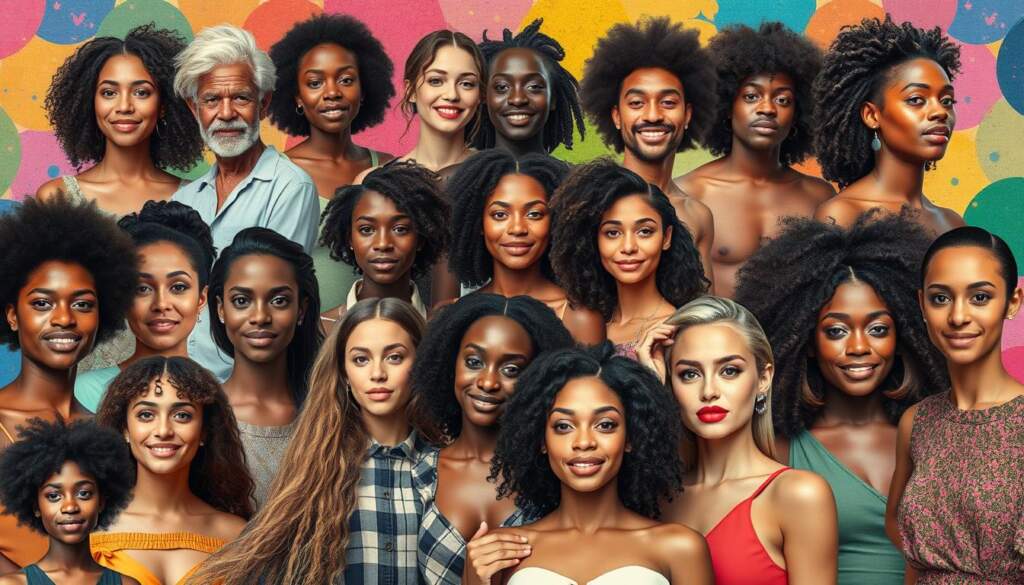

| Decade | Body Image Perception | Media Influence |
|---|---|---|
| 1940s-1950s | Increased acceptance of diverse body types | Media starts reflecting slightly more diversity in women’s bodies |
| 1960s-1970s | Heightened awareness of eating disorders | Hospital admissions for severe anorexia nervosa increase and plateau6 |
| 1990s-2000s | Sharp increase in obesity awareness | Global obesity rates rise sharply, with significant media coverage6 |
| 2010s-Present | Body positivity movement gains traction | Media portrayal begins to shift toward more inclusive and realistic representations of all body types and beauty standards |
Conclusion
The journey through the evolution of beauty standards has been illuminating, tracing a path from the earliest human societies to the modern-day. We’ve seen how the Central Asian ideal once favored features like lighter skin, dark eyes, and black hair, with media now playing a pivotal role in shaping these perceptions8. Similarly, South Asia’s history, captured in ancient depictions of fertility with full breasts, wide hips, and tapered legs, continues to evolve as global influences like those from the US have made their mark8. In charting this narrative, we’ve observed the societal beauty transformations that reflect deep-seated cultural beliefs, whether it’s associating lighter skin with higher status in China or witnessing the potential of the hijab to promote a healthier body image9.
In discussing the future of beauty, we must acknowledge the impact of economic and social factors. The allure of upward economic mobility drives many towards conforming to prevailing beauty norms. Statistics have shown that attractiveness can influence hiring decisions, perceived date satisfaction, and even judicial outcomes, indicating just how profoundly our looks can affect life’s opportunities10. However, as society progresses, there is hopeladen optimism for a growing acceptance of diverse beauty forms. India’s Advertising Standards Council’s new guidelines seeking to eliminate discriminatory portrayals is just one example of the intent to create a more equitable perception of beauty9.
The beauty standards evolution conclusion is that beauty is dynamic and ever-changing. As campaigns and social movements continue to promote diversity and challenge old norms, the societal beauty transformations we are witnessing are likely to keep pace with these progressive tide shifts. The narrative of beauty is rich and varied, much like the mosaic of human culture, and the embracing of this complexity is the most promising path towards the future of beauty.
FAQ
How have beauty standards evolved globally over time?
Can you explain the ancient beauty rituals and their significance?
What was distinctive about Renaissance aesthetics in terms of beauty?
How did Victorian fashion influence beauty ideals?
How did art impact the societal standards of beauty?
What were some defining moments in 20th-century beauty standards?
How has feminism influenced contemporary beauty standards?
What role does social media play in the body positivity movement?
Why is the celebration of diversity significant in today’s beauty standards?
Source Links
- It’s All Relative: How Beauty Standards Have Evolved Throughout History — Nena Sterner Photography – https://www.nenasterner.com/journal/its-all-relative-how-beauty-standards-have-evolved-throughout-history
- The Evolution of Beauty: Unveiling the Journey Through Time – https://www.masonanthony.com/the-evolution-of-womens-beauty-standards-from-the-victorian-era-to-modern-times/
- What Art History Can Tell Us about Female Beauty Ideals | Artsy – https://www.artsy.net/article/artsy-editorial-how-art-has-shaped-female-beauty-ideals-history
- Beauty Standards Throughout Culture – https://rangeviewnews.org/25683/features/beauty-standards-throughout-culture/
- The Insane History Of Beauty Standards Since 1900 – https://www.eviemagazine.com/post/the-insane-history-of-beauty-standards-since-1900
- The ever-changing ‘ideal’ of female beauty | CNN – https://www.cnn.com/2018/03/07/health/body-image-history-of-beauty-explainer-intl/index.html
- How White Supremacy and Capitalism Influence Beauty Standards – https://www.teenvogue.com/story/standard-issues-white-supremacy-capitalism-influence-beauty
- PDF – https://projects.iq.harvard.edu/files/isl/files/occidentalisation_of_beauty_standards_eurocentrism.pdf
- How do beauty standards differ globally? – https://www.statesmanshs.org/1018/features/how-do-beauty-standards-differ-globally/
- Facial attractiveness: evolutionary based research – https://pmc.ncbi.nlm.nih.gov/articles/PMC3130383/

